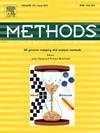利用图注意网络预测后纵韧带骨化相关基因。
IF 4.3
3区 生物学
Q1 BIOCHEMICAL RESEARCH METHODS
引用次数: 0
摘要
后纵韧带骨化是一种严重影响脊柱的退行性疾病,其发病机制复杂,涉及多个基因的相互作用。本研究结合图神经网络和深度神经网络,利用基因组学和生物信息学技术,系统分析了与后纵韧带骨化症相关的基因。通过整合 DisGeNET 和 HumanNetV2 数据库中的基因数据,我们构建了一个 GNN 模型来识别 OPLL 的潜在致病基因,并验证了这些基因在不同细胞类型中的表达特征和机制。研究结果表明,GNN 模型在预测 OPLL 相关基因方面具有显著的准确性和可靠性。此外,细胞轨迹分析和免疫细胞浸润研究揭示了OPLL患者独特的细胞环境和免疫特征,强调了成纤维细胞和间充质干细胞在疾病进展中的重要作用。药物敏感性分析还为未来的个性化治疗方案提供了启示。这项研究不仅加深了人们对OPLL分子机制的了解,还为诊断和靶向治疗的开发提出了新的途径。本文章由计算机程序翻译,如有差异,请以英文原文为准。
Predicting genes associated with ossification of the posterior longitudinal ligament using graph attention network
Ossification of the posterior longitudinal ligament is a degenerative disease that severely impacts the spine, with a complex pathogenesis involving the interplay of multiple genes. This study utilizes a combination of graph neural networks and deep neural networks to systematically analyze genes associated with OPLL, leveraging genomics and bioinformatics techniques. By integrating gene data from the DisGeNET and HumanNetV2 databases, we constructed a GNN model to identify potential pathogenic genes for OPLL and validated the expression characteristics and mechanisms of these genes in different cell types. The findings indicate that the GNN model achieves remarkable accuracy and reliability in predicting genes associated with OPLL. Additionally, cellular trajectory analysis and immune cell infiltration studies uncovered distinct cellular environments and immune features in OPLL patients, emphasizing the significant roles of fibroblasts and mesenchymal stem cells in the disease's progression. Drug sensitivity analysis also sheds light on future personalized treatment options. This study not only enhances the understanding of OPLL's molecular mechanisms but also suggests new avenues for diagnostic and targeted therapy development.
求助全文
通过发布文献求助,成功后即可免费获取论文全文。
去求助
来源期刊

Methods
生物-生化研究方法
CiteScore
9.80
自引率
2.10%
发文量
222
审稿时长
11.3 weeks
期刊介绍:
Methods focuses on rapidly developing techniques in the experimental biological and medical sciences.
Each topical issue, organized by a guest editor who is an expert in the area covered, consists solely of invited quality articles by specialist authors, many of them reviews. Issues are devoted to specific technical approaches with emphasis on clear detailed descriptions of protocols that allow them to be reproduced easily. The background information provided enables researchers to understand the principles underlying the methods; other helpful sections include comparisons of alternative methods giving the advantages and disadvantages of particular methods, guidance on avoiding potential pitfalls, and suggestions for troubleshooting.
 求助内容:
求助内容: 应助结果提醒方式:
应助结果提醒方式:


